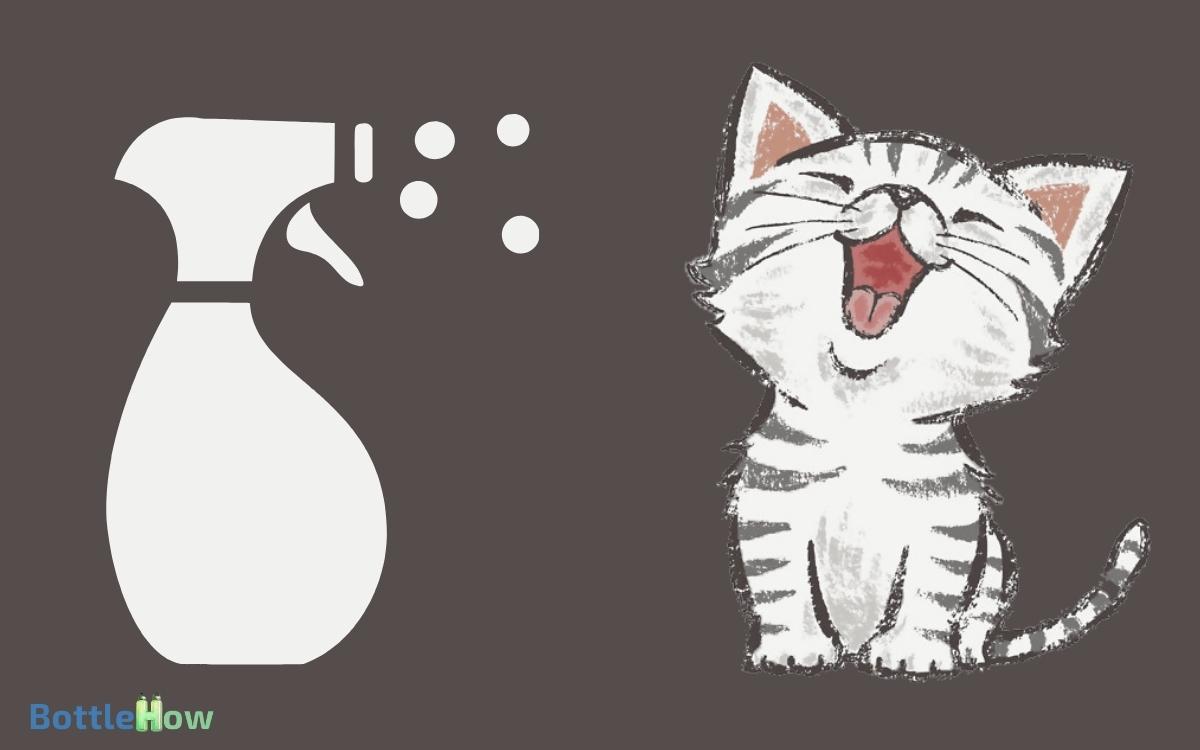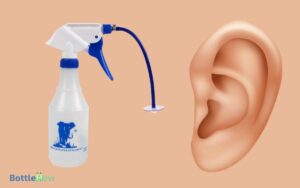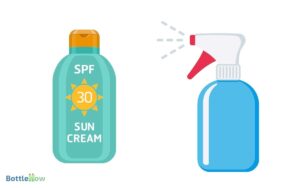Is a Spray Bottle Good to Train Cats? Explored!
Using a spray bottle to train your cat might seem like a simple solution, but it’s not the best approach.
This method can actually cause stress, decrease trust, and lead to long-term behavioral problems. Instead, experts recommend using positive reinforcement techniques.
These methods build trust and encourage good behavior through rewards, rather than instilling fear with punishment.
They also have a more lasting, positive impact on your cat’s well-being. If you’re looking for more effective ways to train and build a better relationship with your cat, exploring alternative methods could prove to be quite beneficial.

Key Takeaways
Understanding Cat Behavior
In order to effectively train cats, one must understand that their behavior often stems from instinctual needs and environmental influences.
You’ll find that your approach can be more empathetic and result-oriented if you consider these factors.
Cats are naturally curious and territorial, so their actions are usually explorations of their environment or assertions of their space.
Understanding this can guide you in providing them with a safe and stimulating environment that naturally discourages unwanted behaviors.
It’s also essential to recognize that each cat is unique. Their past experiences and individual personalities greatly influence how they respond to training and discipline.
By tuning into these nuances, you can tailor your training techniques to be both kind and effective, ultimately fostering a trusting and loving relationship.
History of Spray Bottle Training
Throughout the years, the use of a spray bottle as a training tool for cats has been a topic of considerable debate among pet owners and animal behaviorists.
Originally, the technique emerged as a simple, immediate method to deter unwanted behaviors, such as scratching furniture or jumping on countertops. Over time, its effectiveness and humane implications have been scrutinized.
Here’s a brief overview of the evolution of spray bottle training:
| Period | Popularity | Concerns |
|---|---|---|
| 1970s | Gained traction | Minimal |
| 1980s | Widespread use | Some concerns about stress |
| 1990s | Highly popular | Ethical concerns rise |
| 2000s | Debate intensifies | Increased stress awareness |
| 2020s | Declining use | Focus on positive reinforcement |
Understanding this history helps you appreciate the complexities of using such tools in training practices, guiding you towards more informed, compassionate decisions.
How Spray Bottles Work
You may wonder how a simple tool like a spray bottle can influence your cat’s behavior. When you press the trigger, it releases a mist of water that can startle your cat and deter unwanted activities.
This method leverages the cat’s natural dislike of being wet to modify its behavior gently and effectively.
Spray Bottle Mechanism
Mastering how a spray bottle operates helps you effectively use it for training your cat. A spray bottle functions through a straightforward mechanism.
When you press the trigger, it engages a small pump. This pump draws liquid from the bottle through a tube.
As you continue to squeeze, the liquid is forced up the tube and out through a narrow nozzle at the top. This nozzle is designed to break the liquid into fine droplets, creating a mist.
The tightness of the nozzle can often be adjusted to change the spray pattern from a fine mist to a more direct stream, depending on what you find most suitable for the situation.
Triggering Behavior Modification
Spray bottles can modify your cat’s behavior by associating certain actions with the unpleasant sensation of getting sprayed. This method relies on consistency, as spraying must occur immediately after the unwanted behavior for the cat to make the connection. Some pet owners also wonder why dogs dislike spray bottles, as they often react similarly to the sudden burst of water. Over time, both cats and dogs may learn to avoid behaviors that lead to getting sprayed, making it an effective but gentle training tool.
This method leverages the basic principles of operant conditioning, a learning process used to influence behavior by consequences.
In this scenario, the spray acts as a negative reinforcer, aiming to decrease the likelihood of the unwanted behavior reoccurring.
- Immediate Response: Spray bottles provide instant feedback, which helps cats make the connection between their action and the consequence.
- Consistency is Key: Regular application reinforces learning, ensuring that the behavior modification is clear and understood.
- Non-verbal Communication: Using a spray allows you to correct behavior without raising your voice, maintaining a calm and assertive environment.
This approach, while straightforward, requires thoughtful and compassionate application to avoid stress or fear in your cat.
Water as Deterrent
Water acts as an effective deterrent in training cats, as the unexpected sensation of moisture prompts them to avoid certain behaviors.
When you use a spray bottle, the sudden mist of water serves as an immediate negative reinforcement. It’s important to understand that cats are sensitive animals, and their response to water isn’t just annoyance—it’s often a mild shock.
This method leverages their natural dislike for being wet. However, it’s vital to use this technique sparingly and thoughtfully. Overuse can lead to stress and a breakdown in trust between you and your cat.
Aim to use the spray as a last resort, focusing primarily on positive reinforcement techniques that build confidence and understanding, fostering a nurturing environment for learning and growth.
Psychological Effects on Cats
Using a spray bottle for training can induce stress and fear in cats, potentially leading to long-term behavioral issues.
When you’re aiming to nurture a trusting relationship with your feline companion, it’s essential to comprehend the psychological impact of your training methods.
- Decreased Trust: Cats may start associating you with negative experiences, diminishing their trust in you.
- Increased Anxiety: Repeated exposure to spray bottle discipline can result in heightened anxiety and general unease in your cat.
- Alteration in Behavior: Fear-induced changes might present as aggression or withdrawal, complicating their social interactions and overall well-being.
It’s crucial to acknowledge these effects as they can deeply influence the emotional health of your cat. Opt for positive reinforcement techniques that promote security and mutual respect.
Short-Term Vs Long-Term Impact
When you use a spray bottle for training, it’s essential to take into account both the immediate and lasting impacts on your cat.
Initially, you might notice a quick stop in unwanted behavior, but it’s important to ponder whether this method could harm your long-term relationship with your pet.
Research suggests that while immediate compliance can be achieved, repeated use can lead to increased anxiety and distrust in cats.
Immediate Behavior Changes
While a spray bottle may prompt an immediate change in your cat’s behavior, it’s important to contemplate both the short-term effectiveness and the long-term implications of this training method.
Initially, using a spray bottle can seem like a quick solution to unwanted behaviors:
- Immediate Response: Cats often stop undesirable behavior momentarily upon being sprayed.
- Avoidance: Your cat might start avoiding the areas where they were sprayed, reducing incidents in specific locations.
- Redirection: Spraying can divert your cat from unwanted activities, momentarily focusing their attention elsewhere.
However, it’s vital to balance these immediate effects with understanding that this method mightn’t address the underlying reasons behind your cat’s behavior, potentially leading to other issues.
Long-Term Relationship Effects
Spray bottle training can strain your relationship with your cat over time, potentially leading to fear and mistrust. While you might notice immediate compliance, the long-term impact could be detrimental.
Your cat’s understanding of negative stimuli, like a spray from a bottle, doesn’t necessarily correlate with understanding desired behavior. Instead, they may simply learn to fear the spray or even you, which erodes trust.
Building a relationship based on mutual respect and understanding is more effective. Consider alternative training methods like positive reinforcement, which rewards good behavior rather than punishing the undesirable.
This approach not only fosters a healthier bond but also enhances your cat’s ability to learn and adapt positively, ensuring a loving and trusting relationship for years to come.
Alternative Training Techniques
Effective training alternatives, such as using clicker training or pheromone diffusers, can provide humane ways to modify your cat’s behavior.
These methods respect your cat’s natural instincts and promote a peaceful home environment. It’s essential to understand and implement these techniques correctly for the best results.
- Clicker Training: Utilizing a sound to mark desirable behavior, followed by a reward, helping your cat associate the sound with positive outcomes.
- Pheromone Diffusers: Emitting synthetic pheromones similar to those cats produce when content, which can help soothe and calm your feline.
- Environmental Enrichment: Providing toys, scratching posts, and puzzle feeders to engage your cat’s mind and reduce unwanted behaviors by channeling their energy into positive activities.
Positive Reinforcement Methods
As you explore cat training options, consider the benefits of positive reinforcement, which focuses on rewarding good behavior.
Using treats as motivators can greatly enhance your cat’s learning process by associating good behavior with positive outcomes.
This method not only supports their emotional well-being but also strengthens the bond between you and your pet.
Rewarding Good Behavior
Rewarding your cat for good behavior with treats or affection can reinforce positive actions effectively.
This approach, known as positive reinforcement, isn’t only compassionate but also rooted in scientific principles of animal behavior.
By acknowledging and rewarding your cat’s good actions, you’re encouraging those behaviors to be repeated.
Here are key ways to effectively reward your cat:
- Consistent Timing: Reward immediately after the desired behavior to help your cat make the connection.
- Appropriate Rewards: Use rewards that genuinely motivate your cat, focusing on their preferences.
- Positive Interaction: Combine physical affection or verbal praise with rewards to enhance the positive association.
Treats as Motivators
Treats often serve as powerful motivators in training cats through positive reinforcement methods.
By rewarding your cat with a treat immediately after they display a desired behavior, you’re utilizing an effective technique known as positive reinforcement.
This approach not only encourages your cat to repeat the behavior but also fosters a stronger bond between you both.
It’s essential, however, to choose healthy treats and use them sparingly to avoid overfeeding. Treats should complement, not replace, their regular diet.
Additionally, consistency in reward timing is important to help your cat associate the treat with the correct action.
By understanding and respecting your cat’s dietary needs while using treats strategically, you’ll enhance training effectiveness and contribute to their overall well-being.
Role of Consistency in Training
Consistency plays a crucial role in ensuring that your cat understands and adheres to the training objectives you set.
When you’re consistent with your training methods, your cat is more likely to develop a clear understanding of what behaviors are expected.
This consistency reduces confusion and reinforces learning, making the training process smoother and more effective.
Here are key reasons why consistency matters:
- Clear Expectations: Frequent repetition of the same commands helps your cat understand what actions are desired.
- Stronger Associations: Consistent responses to behaviors help your cat link actions to consequences more quickly.
- Enhanced Trust: When you’re consistent in your reactions, your cat learns to trust the training process, which can deepen your bond.
Expert Opinions on Spray Bottles
Many experts caution against using spray bottles in cat training, highlighting potential negative impacts on the animal’s well-being and trust.
You’ll find that veterinarians and animal behaviorists emphasize the importance of understanding your cat’s emotions.
Using a spray bottle can create fear and stress, which might lead to behavioral issues rather than solving them. It’s vital to foster a positive environment where your cat feels safe and understood.
Instead, experts recommend reward-based training, which reinforces good behavior without causing psychological stress. This method not only builds trust but also enhances the bond between you and your cat.
By focusing on positive reinforcement, you’re more likely to achieve lasting behavioral changes while maintaining a happy and healthy relationship with your pet.
Case Studies: Success and Failure
Exploring case studies reveals significant insights into the effectiveness and ramifications of using spray bottles in cat training.
You’ll find that outcomes can vary greatly depending on the individual cat’s temperament and the consistency of the training approach.
Many veterinarians and animal behaviorists emphasize understanding each cat’s behavioral cues to guarantee training aids are used effectively and compassionately.
- Variability in Response: Some cats may temporarily cease undesirable behaviors, while others become increasingly anxious or fearful.
- Long-term Effects: In cases of failure, cats often exhibit increased stress or aggression over time.
- Behavioral Rebound: Instances where initial success was followed by the return of unwanted behaviors, suggesting the need for more holistic and positive reinforcement-based approaches.
Creating a Stress-Free Environment
To foster a stress-free environment for your cat, prioritize spaces that are quiet, secure, and enriched with engaging toys and perches.
It’s important to understand that cats thrive in areas where they can observe without being in the direct line of traffic. This setup not only nurtures their curiosity but also provides a safe retreat when they feel overwhelmed.
You’ll find that a stable environment minimizes stress and promotes healthier behaviors. Simple additions like scratch posts or interactive feeders stimulate their mind while meeting their instinctual needs.
Recommendations for Cat Owners
As a cat owner, you should regularly schedule veterinary check-ups to guarantee your pet’s health and well-being.
Beyond medical care, there are other important steps you can take:
- Provide Mental Stimulation: Use puzzle feeders and toys that encourage natural behaviors like hunting and foraging.
- Establish a Routine: Cats thrive on predictability. Set consistent times for feeding, play, and quiet time to help your cat feel secure.
- Use Positive Reinforcement: Instead of punitive measures like spray bottles, reward your cat for good behavior with treats, petting, or verbal praise.
These strategies not only nurture your cat’s physical health but also bolster their emotional well-being.
Remember, a happy cat is more likely to exhibit favorable behavior, making your life easier and more fulfilling.
Conclusion
While spray bottles might seem like a swift solution for training, they often sow seeds of stress rather than success. Experts emphasize that understanding and patience pave a more vital path.
Opt for positive reinforcement techniques to foster a feeling of safety and strengthen your bond.
Remember, creating a caring, consistent environment is essential for your cat’s comfort and confidence.
Choose compassion over convenience to cultivate a harmonious home where your feline friend can flourish.






